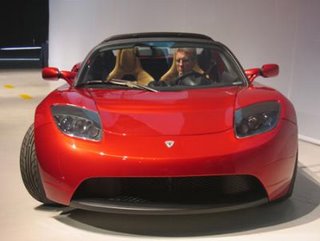Sharp Solar Panels to Be Offered on All Homes in New California Community
BLU S.K.Y Homes Makes Solar Power a Standard for 300 New Homes In Bakersfield
Sharp, the world leader in solar cell production, will supply solar panels for up to 300 new homes that are being built by BLU S.K.Y Homes in Bakersfield, California. Juliana's Garden, located in the new master-planned community of City in the Hills, will be the first of several communities BLU S.K.Y Homes builds which will feature the solar systems. Both the Camellia and Wisteria neighborhoods within Juliana's Garden will offer Sharp's solar power system as a standard feature on all homes.
Camellia and Wisteria homes will range from approximately 1,589 to 3,429 square feet and present three to six bedrooms, up to four bathrooms, an attached two- or three-car garage, and depending upon the floor plans, will include large family rooms, sunrooms, great rooms and Italianate courtyards.
Depending on the size of the home, solar energy systems will range in size between 1.7 and 3.5 kilowatts (kW). All systems will utilize a combination of Sharp's 62- and 142-watt rectangular modules and 72-watt triangular modules to supplement the electricity supplied from the local utility company. Renewable Energy Concepts (REC), a leading installer of residential solar electric systems, will be responsible for the installation. Construction on Camellia and Wisteria's first homes began this month and will continue for the next two to three years.
"We've embedded environmentally friendly methods into virtually all areas of the Camellia and Wisteria neighborhoods," commented Van Roberts, president of BLU S.K.Y Homes. "In addition to Sharp's state-of-the-art solar energy systems, these homes will also include landscaping with automatic drip irrigation systems for lower water usage, and low wattage and motion-sensing lighting to cut electricity consumption. Virtually every aspect allows for a greener and healthier lifestyle. We are committed to creating exquisite communities where families can live, work and thrive. Working with Sharp to put solar in this development is a perfect example of this commitment, and is a win-win for the community and prospective homebuyers because it benefits the environment and gives homeowners real financial benefits."
A recent survey conducted by Sharp found that the majority of Americans believe homebuilders should offer solar power as an option for all new home construction and are even willing to pay a premium for it. "Consumers are embracing solar energy and requesting it as an option for their homes," said Ron Kenedi, vice president, Sharp's Solar Energy Solutions Group. "BLU S.K.Y Homes realizes the economic and environmental benefits that can be passed onto homeowners by providing solar as a standard on new homes."
Commissioned by Sharp, the Roper survey found that eight out of ten Americans believe that homebuilders should offer solar power as an option for all new home construction, and two-thirds of Americans are willing to pay a premium for homes that have solar systems installed, when told that solar homes have a proven higher resale value.
Sharp Electronics Corporation is the U.S. subsidiary of Sharp Corporation, Osaka, Japan. With solar cell production capacity of 450 megawatts (MW) worldwide and more than 200,000 installations per year, Sharp is the world's solar production leader, a position the company has held for more than 5 years. As a corporation, Sharp is committed to achieving a company-wide net zero energy operation by 2010, part of its long term commitment to solar and to the environment. Further information on Sharp's commitment to solar energy and its solar product line is available online at www.sharpusa.com/solar.
Sharp Electronics Corporation is the Mahwah, N.J.-based marketing and sales subsidiary of Japan's Sharp Corporation, a worldwide developer of the core technologies that are integral to shaping the next generation of home entertainment products, appliances, networked, multifunctional office solutions, solar energy and mobile communication and information tools. Leading brands include AQUOS(R) Liquid Crystal Televisions, 1-Bit(TM) digital audio products, SharpVision(R) projection products, Carousel(R) microwaves, IMAGER(TM) digital multifunctional systems, and Notevision(R) multimedia projectors. Sharp Electronics Corporation employs approximately 2,000 people throughout the U.S. supporting more than 50 product lines.































